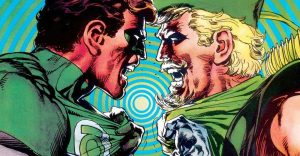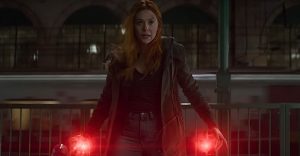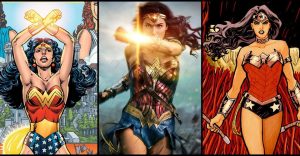Ghost Of Tsushima: 10 Characters That Were Totally Wasted

Despite drawing rave reviews for its aesthetic design and visual graphics, the mega-popular open-world action-adventure game Ghost of Tsushima has been criticized for boasting repetitive gameplay and flat, two-dimensional characters that offer very little to the storylines. For example, much of the game revolves around following an NPC through the vast regions of ancient Japan and being told to “defeat all Mongols,” which becomes all too boring and underwhelming as time goes on.
While some characters like Yuna, Kenji, Yuriko, and Norio have excellent plotlines and heroic character arcs, other characters leave a lot to be desired when playing Ghost of Tsushima.
10 Shimura

Stubbornly clinging to the way of the samurai, Jin’s sage mentor Shimura couldn’t be a duller inconsequential main character in the popular open-world game. Unable to sympathize with outside perspectives, including Jin’s, Shimura’s obstinance prevents the character from having a significant impact. He’s too stuck in his ways to embrace stealth missions and advance Jin’s strategic plan.
Rather than actually helping Jin as a protective father figure, Shimura leads a band of samurai to their own death. When Jin infiltrates the camp to avenge the Mongols, Shimura becomes nonsensically irate and all but disavows Jin. Ineffectual and flat as can be, Shimura has not been used properly.
9 Khotun Khan

Although he is the chief villain and hard boss in Ghost of Tsushima and the ruthless grandson of Ghengis Khan, Khotun Kahn is a stock standard villainous caricature who adds nothing to the game other than an evil scowl and dirty fighting methods. Despite pulling all the strings to make Jin’s existence a living hell, Khan hardly lives up to his namesake. What a deeply underwhelming baddie.
Moreover, after Khotun’s death, many of his forces remain in Tsushima to fight Jin and his allies, meaning Khotun’s command in the region hardly made difference whether dead or alive.
8 Masako

For as substantial a role as Lady Masako plays in the game, her ultimate character arc leaves a lot to be desired in Ghost of Tsushima. The villain is guided by blind rage and is hell-bent on avenging her slain family, yet her storylines cover the same territory over and over again in the most tediously repetitive manner.
Masako’s one-dimensional arc consists of killing several people and requiring Jin to simply assuage her rage. Most characters are too afraid to interact with Masako, which limits her activity, and she even tries to duel with Jin after he helps her out repeatedly. For such a major character, Masako could have done a lot more.
7 Ishikawa

After beginning with a fairly compelling storyline, the villainous Ishikawa’s importance to the game fizzles out after a while. Moreover, much of his time is spent trying to kill his pupil, Tomoe, although he is the one who is responsible for her betrayal.
When Jin finally confronts Ishikawa, most of his dialogue goes in circles to nowhere as he tries to convince the protagonist to leave Tomoe unharmed, which makes very little sense. Ishikawa’s constant need to be saved also betrays his title as sensei, making his so-called combat prowess completely ineffective.
6 Ryuzo

Although he was one major character revelation that comes out of nowhere, Ryuzo’s betrayal of Jin ultimately leads to nowhere in Ghost ofTsushima. Jin’s longtime childhood and member of the Straw Hat ronin went full-on Benedict Arnold, setting him up for a deadly duel that players look forward to with great alacrity.
Alas, Ryuzo’s wasted inaction comes down to simply realizing Jin is a better swordsman, and rather than take him on in a fight to the death, Ryuzo comes up with a lame alternative plan to thwart his sworn enemy. It’s weak plotlines like this that make Ghost of Tsushima inferior to open-world games with better stories.
5 Assassins

In the Legends mode of Ghost of Tsushima, warriors are divided into classes of increased strength that include Samurai, Ronin, Hunter, and Assassin. However, one thing players should know before starting Ghost of Tsushima is, despite having the highest stealth attack damage in the game, Assassins are utterly feckless fighters who can be brought down in two hits even with fortified armor builds.
As a result of the wildly underwhelming character, an entire Reddit thread has been devoted to besmirching Assassins in the game. One responder even calls them diet samurai, which is quite a slap in the face considering their so-called superior rank.
4 Kaede

While repetition and one-dimensional storylines often lead to wasted characters in the game, so too do anticlimactic battle sequences. One severely underwhelming conflict that comes to mind is the bathetic showdown between Jin and Kaede, a samurai guarding Tadayori’s Rest.
Upon encountering Jin, Kade immediately confronts him, pulls her sword, prepares for battle. However, after simply witnessing Jin’s impressive swordplay, she instantly surrenders, sheaths her sword, and makes Jin promise to wear the armor he already dons. It’s a really weak moment and a wasted opportunity for Jin to really earn his stripes.
3 NPCs

A common refrain among most Ghost of Tsushima players is the underwhelming nature of the non-playable characters, which often serve as smiths and merchants in the game. There to dispense bits of intel to Jin to defeat Mongol forces, the NPCs feel limp, lifeless, and quite generic.
According to a Redditor named u/cloudcola in a post entitled “What would you improve on Ghost of Tsushima,” the poster listed NPC number one, saying “they don’t feel alive to me. Instead, they feel generic repeat characters. The side quests, sceneries, and villages are nice but I feel there’s something lacking to the NPCs.” With 42 upvotes and a slew of supportive responses, the NPCs are indeed wasteful.
2 Ghengis Khan

Despite being mentioned in passing early on, founding member of the Mongolian Empire Ghengis Khan is completely wasted in the game. Granted, the story is set 50 years after his death and focuses on his fictional grandson Khotun Khan invading Japan, but for a game so entrenched in the history of Japan, Ghengis’ monumental role in shaping the landscape, culture, population, etc. feels extremely short-changed.
Modern video games are so advanced and cinematic in their narrative cut scenes that flashbacks to Ghenghis Khan’s time both with Kublai and with Khotun easily could have been included as a way of creating a more engaging origin story.
1 Jin Sakai

As controversially as it may sound, the game’s protagonist Jin Sakai is an oddly listless, soulless empty vessel of a character who comes across as a completely blank slate. While it may be intentional in order to let other characters shine, boring is the last thing the main character of a video game wants to be described as.
Yet, most agree that Jin is a dull, flat, 2-dimensional hero who makes the game’s 20-50 hour investment a chore to get through, leaving his sidekick Yuna to do most of the work. The passive character certainly aligns with that of a ghostly spirit, a vapid entity who is literally lifeless, but Jin’s lackluster personality completely wastes the fundamental importance of having a compelling lead character.

















